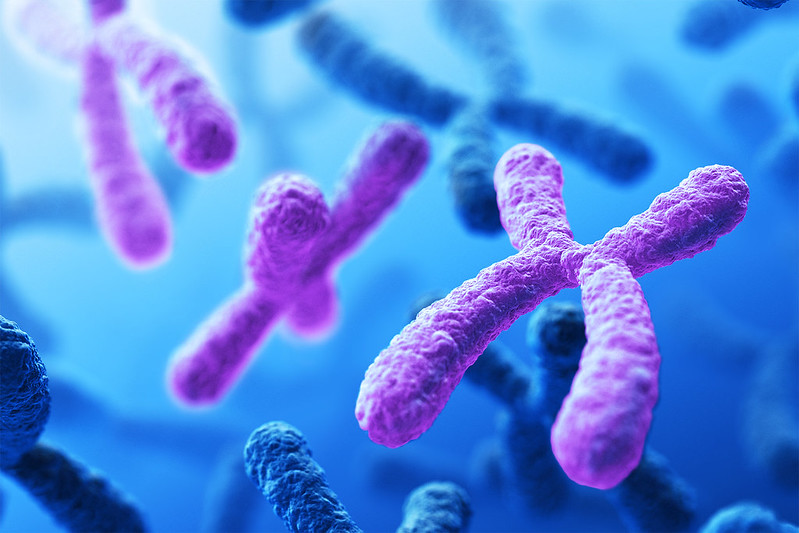The first, complete, telomere-to-telomere sequence of a human autosome has been completed. The sequence of chromosome 8 not only fills in the gap of more than three million bases missing from the current reference genome, but its DNA content and arrangement are of interest in an evolutionary context, in several immune and developmental disorders, and in chromosome sequencing structure and function generally. The entire sequence of chromosome 8 is 146,259,671 bases.
This work is published in Nature paper is an article titled, “The structure, function, and evolution of a complete chromosome 8.”

In addition to the human chromosome 8 assembly, the researchers also created high-quality draft assemblies of the centromere in the chimpanzee, orangutan, and macaque. The data allowed the scientists to begin to chart the evolutionary history of the chromosome 8 centromere. The researchers observed, on a molecular scale, a layered, mirrored symmetry in how this centromere structure evolved from great ape ancestors with more ancient parts pushed to the periphery.
While chromosome 8 offers some insights into evolution and human biology, the researchers pointed out that the complete assembly of all human chromosomes would be necessary to acquire a fuller picture.
Indeed, sequencing more chromosomes is the group’s goal. Adam Phillippy, PhD, senior investigator at the computational and statistical genomics branch of the National Human Genome Research Institute (NHGRI) and author on the paper tweeted, “Stay tuned for lots more to come from the Telomere-2-Telomere consortium in the coming months. Two down, 22 to go!”
Earlier research by a number of scientists had pointed to regions of chromosome 8 as being important both in the normal formation of the brain, as well as to some developmental variations, such as small head size or skull and facial differences. Mutations on this chromosome have also been implicated in some heart defects, certain forms of cancer, premature aging syndromes, immune responses, and immune disorders like psoriasis and Crohn’s disease.
However, the full sequencing of this and most other human chromosomes could not be attempted until recently because the technology and methods to wade through large areas of duplication and identical repeats had not become available. Putting together the puzzle accurately from short reads of DNA, for instance, would have been extremely difficult.
The chromosome 8 assembly achievement benefited from using complementary long-read sequencing technologies, as well as from the availability of DNA material from hydatidiform moles. These are rare, abnormal growths in the placenta.
The full sequencing of chromosome 8 provides information that might improve, for example, the understanding of what predisposes specific parts of the chromosome’s DNA to microdeletions suspected in certain forms of developmental delay, brain and heart malformations, and autoimmune problems.
The researchers were also able to obtain more information on a part of chromosome 8 that contains some of the greatest copy-number variability among people. The repeat unit can vary from 53 to 326 copies.
With the chromosome 8 assembly finished, researchers look forward to the world scientific community completing other human chromosome assemblies, and to new challenges in applying what has been learned to further studies of human genome sequencing.



